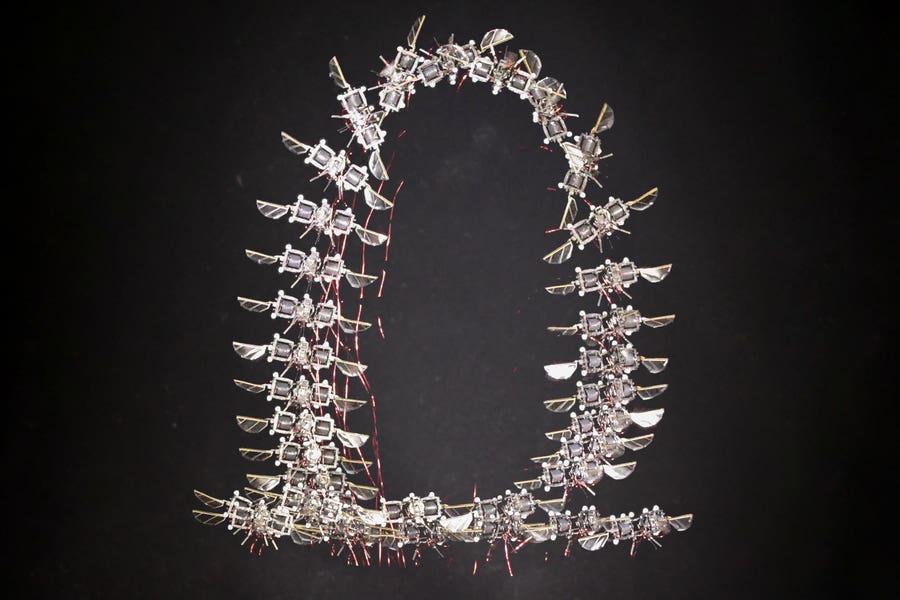FDA-approved drugs restore insulin in diabetes patients within 48 hours
FDA-approved drugs restore insulin-producing cells in just 48 hours, offering a new path for treating type 1 diabetes.

Scientists found that two FDA-approved drugs can restore insulin production in just 48 hours. (CREDIT: CC BY-SA 4.0)
In a major breakthrough for diabetes treatment, scientists have found a new way to regenerate insulin-producing cells. This approach could change how type 1 diabetes is treated, moving beyond just managing symptoms to restoring lost function in the pancreas.
For decades, people with type 1 diabetes have depended on daily insulin injections to stay alive. Now, researchers have shown that certain drugs can wake up dormant cells and turn them into ones that act like insulin-producing beta cells.
A bold step beyond insulin injections
Type 1 diabetes occurs when the immune system mistakenly attacks and destroys beta cells in the pancreas. These cells are crucial because they produce insulin, the hormone that helps your body manage blood sugar. Without them, blood sugar levels can spiral out of control, leading to serious complications. Treatments have come a long way, but even the best ones don’t stop the ongoing loss of beta cells. They help you manage blood sugar, not fix the root problem.
Today’s standard treatments often involve transplanting either the whole pancreas or isolated islets. These approaches work but come with big downsides. Organ availability is limited, and patients need immunosuppressant drugs to avoid rejection. Those medications can cause serious side effects. That’s why scientists are looking for better answers—ones that can help the body grow its own insulin-producing cells again.
Awakening cells inside the pancreas
Researchers at the Baker Heart and Diabetes Institute in Australia believe they’ve found a solution. Led by Professor Sam El-Osta, the team discovered that cells inside the pancreas can be reprogrammed to produce insulin again. These cells, known as ductal progenitor cells, are found in the small tubes that carry digestive fluids through the pancreas. For years, scientists debated whether these cells could become insulin-producing beta cells. Now, the evidence is growing stronger.
In their study, El-Osta’s team used cells from both children and adults with type 1 diabetes, as well as from people without diabetes. They exposed these pancreatic duct cells to two FDA-approved drugs: GSK126 and Tazemetostat. Both drugs target EZH2, a protein that helps control which genes are active or silent. After just 48 hours of drug exposure, the cells began producing insulin and responding to glucose—just like normal beta cells do.
Related Stories
Rewriting the pancreas’s epigenetic code
The key to this transformation lies in epigenetics. Instead of changing the genetic code, epigenetics changes how that code is read. EZH2 is a histone methyltransferase. That means it places chemical marks on DNA-packaging proteins called histones. These marks can either silence or activate nearby genes.
In healthy people, EZH2 helps maintain the identity of different cell types. But in diabetes, it seems to suppress the potential of ductal progenitor cells to become beta cells. By blocking EZH2 with drugs like GSK126 and Tazemetostat, the researchers were able to remove those silencing marks and unlock the regenerative potential of these cells.
They showed that the shift from a repressed to an active chromatin state—marked by changes in histone modifications H3K27me3 and H3K4me3—was essential to kickstart insulin production. Once these marks were altered, the cells not only made insulin but released it in response to glucose, a key hallmark of true beta-cell function.
Small molecules with big potential
The two drugs used in this study are already approved to treat rare cancers. Tazemetostat, known under the brand name Tazverik, was approved by the U.S. FDA in 2020 to treat certain types of sarcoma. GSK126 is a research compound also targeting EZH2. What makes these findings exciting is how quickly the drugs work—within just two days—and the fact that they can trigger insulin production even in cells from donors with long-standing diabetes.
One earlier case study had hinted at this possibility, showing beta-like cell activity from a single type 1 diabetes donor. But scientists needed broader evidence. This new study provides that, using samples from people ranging in age from seven to 61. It also answers the lingering question of whether changing gene activity alone could lead to real insulin production—not just in theory, but in practice.
According to the research, these effects weren’t limited to young donors. Cells from older individuals with long-term diabetes also responded. That means age or disease duration may not be a barrier to regeneration.
Revisiting a long-debated idea
The idea that cells in the pancreatic ducts could give rise to insulin-producing ones isn’t new. Early studies suggested a link between duct cells and islets, the clusters where beta cells live. Injuries to the pancreas, such as duct ligation or partial removal, led to signs of regeneration, especially when certain factors like NGN3 were present—mimicking what happens in embryos.
Still, for years, many scientists believed adult humans couldn’t grow new beta cells from ductal sources. Key lineage-tracing studies failed to find proof, and the idea lost favor. Instead, the focus shifted to encouraging existing beta cells to replicate, though that happens at low rates.
Now, newer technologies like single-cell RNA sequencing have brought fresh insights. Some studies show that ductal NGN3-positive cells can turn into adult beta cells. Others have demonstrated that alpha cells, which make a different hormone, can transform into beta cells under the right conditions. These discoveries open the door to new strategies for cell regeneration, not only in labs but potentially in patients as well.
From the lab bench to the bedside
The Baker Institute team believes their work is just the beginning. Dr. Keith Al-Hasani, a JDRF Senior Research Fellow, said the next step is testing this approach in preclinical models. If successful, the goal is to develop these drugs into therapies that can help people living with diabetes make their own insulin again.
This could be a game-changer. Not only for people with type 1 diabetes but also for those with insulin-dependent type 2 diabetes, who make up nearly a third of all type 2 cases. It also reduces reliance on organ transplants, which are costly, limited, and risky.
The findings were published in Nature, one of the world’s most respected science journals. They underscore the power of combining molecular biology with clinical insight to solve one of medicine’s toughest problems.
A growing global crisis
The need for new treatments has never been more urgent. Over 530 million adults worldwide live with diabetes. That number is expected to rise to 643 million by 2030. Diabetes accounts for nearly 10% of all deaths globally. Current therapies, though helpful, do not stop the slow destruction of beta cells.
This research offers hope for reversing that trend. By targeting the body’s own stem-like cells in the pancreas, scientists might soon replace the need for lifelong insulin shots with a regenerative medicine approach.
As Professor El-Osta put it, “We consider this regenerative approach an important advance towards clinical development.” His team’s work shows that with just a short burst of drug treatment, insulin production can be restored—an idea that could redefine the future of diabetes care.
Note: The article above provided above by The Brighter Side of News.
Like these kind of feel good stories? Get The Brighter Side of News' newsletter.



